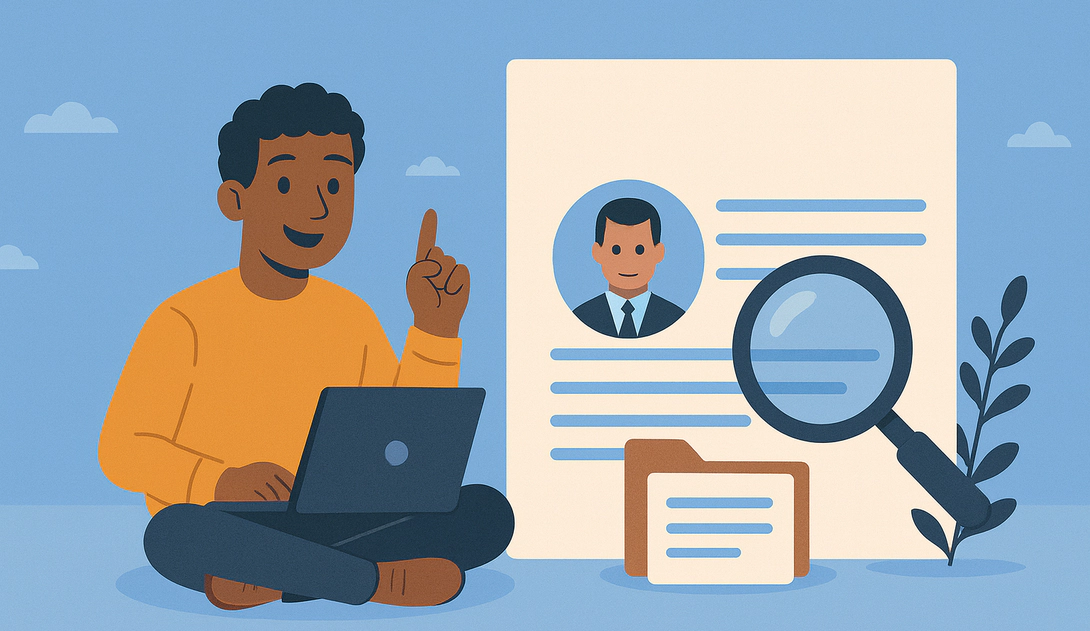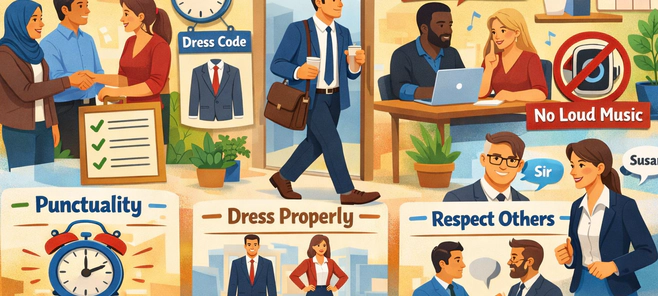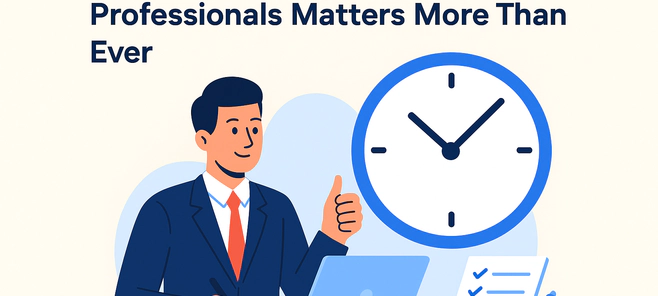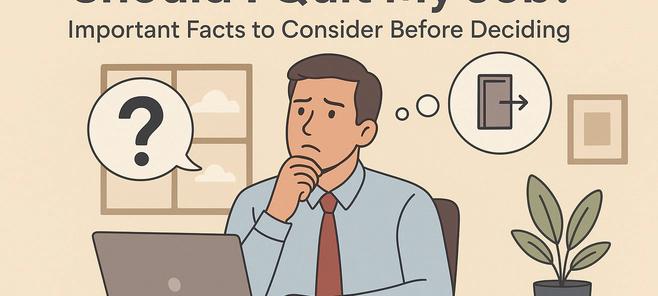Different types of people choose different professions, but those who want to build their career in the job sector at the starting point often face one common question: how to get a job, or even more specifically, how to get a job with no experience.
To start your journey, you must be strategic. It is true that no-experience jobs usually do not require a long list of qualifications, but even these jobs demand some common expectations. It is easy to imagine yourself working in your dream role, but the reality of securing a job is far more challenging. Before repeatedly asking how to get a job, pause and ask yourself: What is my career goal? Which profession or industry do I want to begin with? Once you have clarity, you can design a strategic plan and move forward with confidence.
Step 1: Set Your Preferred Career Sector
Before applying anywhere, you need to set your preferred sector. This helps you avoid confusion and build focus.
It is tempting to apply for every available position, but that wastes both your energy and time. Instead, narrow down your choices and align them with your strengths and ambitions.
Industry Research
If you have already selected your dream job or position, begin by researching the industry that relates to it. This research can be primary (direct interviews, surveys, discussions) or secondary (reports, online resources, articles).
You can collect information about the history of the industry, its present challenges, and its future prospects. For example, if you want to enter the IT sector, study how demand for software engineers has evolved, what skills are now trending, such as AI and data analysis, and what the future demand may look like. This type of research helps you design a realistic journey.
Organization Research
Industry research is not enough. You also need to know about specific organizations within your sector. Try to collect data about their work culture, employee benefits, compensation structure, and reputation.
For example, a multinational company may offer excellent pay but a very competitive culture, while a local organization may provide a friendly environment with moderate benefits. Evaluating these factors ensures you choose a workplace that matches your values and lifestyle.
Professional Guidance
Without proper research or guidance, many people plan their career blindly. After years, they realize they are on the wrong track. To avoid this, seek guidance from the very beginning.
You can talk to industry leaders, professionals, and people already working in your chosen role. There are also professional organizations that offer career guidance. Attending workshops, seminars, and networking events allows you to interact with experts. Sometimes, professionals even provide one-to-one mentorship. Do not miss these opportunities; they can save you years of trial and error.
Research Papers and Journals
Research papers, journals, and reports are valuable resources. They often include sector-specific data, information about challenges, and insights on future opportunities. For example, journals might highlight that digital marketing will require more AI knowledge in the next five years. By reading such publications, you can identify which skills to learn early.
Step 2: Identify Required Skills and Qualities
After you set your preferred sector, the next step is to identify the skills and qualities required to succeed.
Understand Job Context
Every job is linked to solving business problems. Companies hire people who can contribute to growth, improve systems, and serve customers better. To understand this, study multiple Job Opportunities. Look closely at the purpose of the role and the requirements listed. This will give you a broader understanding of what companies expect.
For example, a customer service role is not just about answering calls; it is about solving customer issues, retaining clients, and creating satisfaction that benefits the business.
Jot Down Skill Requirements
Every job advertisement mentions skills, some directly, others indirectly. Make a list of these requirements. These skills often include communication, teamwork, leadership, technical knowledge, or problem-solving ability.
When preparing your cover letter and resume, use these keywords naturally. It signals to employers that you meet their expectations.
Understand Responsibilities
Beyond skills, recruiters want to know if you understand the responsibilities of the role. From job advertisements, identify the daily tasks you would perform. Write them down and connect them to your skills in your application. For example, if the role involves preparing reports, highlight your ability with Excel or Google Sheets.
Step 3: Create a Strong Cover Letter
A cover letter is often underestimated. Many candidates either do not write one or simply use the same generic letter for all jobs. This is a mistake.
A cover letter allows you to present your personal story, enthusiasm, and suitability for the role.
Tips for Writing an Effective Cover Letter
- Keep the tone formal but authentic.
- Mention the source of the job (portal, reference, company site) or explain why you applied directly.
- Specify why this job interests you and how your skills match.
- For freshers, emphasize extracurricular activities, volunteer work, or training.
- Proofread for grammar, spelling, and formatting errors before submitting.
Customizing each cover letter shows employers that you are genuinely interested, not just applying everywhere.
Step 4: Build a Professional Resume
A resume is your first impression. Many candidates mistakenly think that listing education, skills, and contact details is enough. A professional resume needs more structure and customization.
Tips for Creating a Resume that Stands Out
- Select a clean and professional template that matches your field.
- Write a customized career objective instead of copying standard phrases.
- Keep it concise and avoid unnecessary details.
- Highlight relevant skills, training, and experience only.
- Focus on achievements rather than responsibilities.
- Include extracurricular activities that show leadership or teamwork.
- Proofread multiple times to avoid errors.
If possible, seek expert feedback to improve your resume. A well-designed resume shows professionalism and attention to detail, qualities employers value highly.
Step 5: Submit the Application Carefully
Even after preparing strong documents, many candidates are rejected because they make mistakes during submission.
Follow These Guidelines
- Read the job circular carefully to understand the submission process.
- If submission is online through a portal, complete every section and use keywords from the circular.
- If submitting hard copy, format it professionally and complete “To” and “From” sections correctly.
- When sending via email, write the job title in the subject line clearly.
- Always use a professional email address and include a signature with contact details.
Step 6: Prepare for the Interview
The interview is often the deciding stage. Many candidates get shortlisted but lose opportunities because of poor preparation.
To Succeed in Interviews
- Make a list of common interview questions.
- Prepare a short but impactful self-introduction.
- Use job-related keywords in your answers.
- Find out proper interview and professional guidelines from Crawljobs.
- Practice in front of a mirror to build confidence.
- Participate in mock interviews with friends or mentors.
- Watch interview tutorials on YouTube or attend LinkedIn workshops.
Remember, interviewers not only test your knowledge but also your confidence, communication, and attitude.
Pro Tips for Freshers
Freshers often feel disadvantaged, but in reality, thousands of companies actively hire new graduates. While no experience jobs do not demand professional experience, they still require certain basic skills.
Here are Some Strategies
- Search for no experience jobs on job portals, LinkedIn, newspapers, and company websites.
- Consider part-time jobs or internships to enrich your resume.
- Enroll in certification courses, either online or offline.
- Develop soft skills such as communication, leadership, and time management.
- Gain transferable skills like MS Word, Excel, Google Sheets, and presentation tools.
- Learn digital skills like Canva, basic graphic design, or AI tools and showcase them in a portfolio.
- Prepare thoroughly for interviews and practice common answers.
Do not feel discouraged if you lack job history. Skills, training, and willingness to learn can often outweigh experience.
Step 7: Stay Consistent and Motivated
Securing a job is challenging, but with the right approach, it becomes achievable. Many candidates lose hope after facing rejection, but persistence is the real key.
Always remember:
- A rejection does not define your value.
- Each application is a learning opportunity.
- Updating skills continuously improves your chances.
- Networking often creates unexpected opportunities.
Final Thoughts
Learning how to get a job is not only about writing resumes or attending interviews, it is about building clarity, preparing strategically, and staying motivated. Whether you are searching how to get a job with no experience or aiming for a specific professional role, the formula is the same: research, preparation, and persistence.
The journey may feel long, but every effort adds up. Thousands of candidates succeed every year, and you can too. If you set clear goals, build relevant skills, and never stop trying, success will eventually be yours.
So take the first step today. Secure that no experience job, gain confidence, and gradually build the career you dream of.





